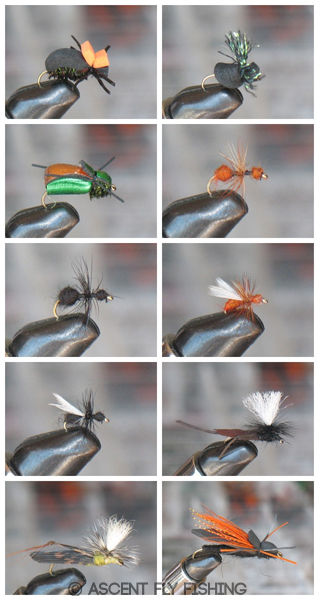When its Time to Fly Fish With Terrestrials
Posted by Peter Stitcher on 9th Sep 2014
The astute fly angler doesn't wait until they are on the water before they attempt to match the hatch, but begin the process while driving to stream, and continue to hone their fly choice while trekking down to the water. Each summer and fall, clumsy hopping, crawling, and flying terrestrials (land insects and animals) make up an important part of a trout's diet. While seining the water and pumping fish for intel (stomach contents) are excellent ways to determine what is on the menu, we would propose that much can be learned from a "Windshield Sample" on the way to the river. Grasshoppers will infect grassy banks, Mormon Crickets fall into streams by their thousands during their migration, ants swarm in colonial flights, and big juicy beetles drop into high mountain lakes and streams.
We are not downplaying or discounting the ability to identify a caddis larva, or the mayfly in flight, but walk to the river and the chorus of insects and animals sounding around the river can offer vital information into what trout may be eating. Unlike their aquatic brethren, terrestrial insects are poor swimmers once in the water, making them an easy meal for feeding trout. Terrestrial action generally warms up with the weather, as both the invertebrates and the fish become more active with the heat of the day and through dusk. Whether you are fishing a mountain lake above treeline, a placid Pennsylvania spring creek, or the big waters of the Pacific Northwest, these big-bodied bugs are often too good for the opportunistic feeding trout to pass, and can offer some of the best summer and fall dry fly action.


